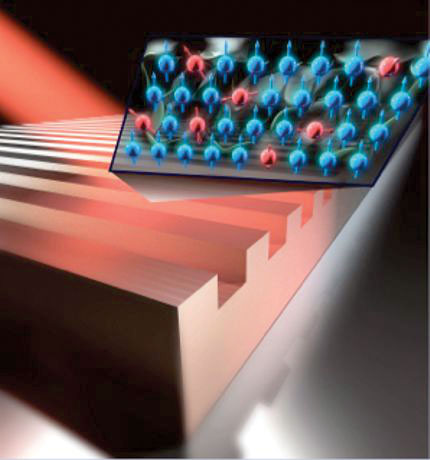Fast times in ferromagnetic alloys
DOI: 10.1063/PT.3.1545
Fast times in ferromagnetic alloys. As magnetic materials for storage and other applications get pushed ever smaller and faster, a solid understanding of their behavior—including the correlated interactions among electrons, photons, and phonons—at those scales will be critical. X rays from synchrotron light sources are one way to obtain element-specific information at ultrafast time scales. Now, scientists from JILA and their colleagues from NIST and Germany have used tabletop techniques to probe magnetic dynamics on the fastest time scales; in particular, they studied the role of the exchange coupling between components in a ferromagnetic alloy. Working with magnetic diffraction gratings of permalloy (Ni0.8Fe0.2), as sketched here, the researchers first use a short, strong IR laser pulse to excite the electrons, which causes the alloy to demagnetize. Then, to trace the evolution of the magnetization, they illuminate the gratings with 10-femtosecond bursts of extreme UV light, obtained through high-harmonic generation (see PHYSICS TODAY, March 2005, page 39
More about the Authors
Richard J. Fitzgerald. rfitzger@aip.org







